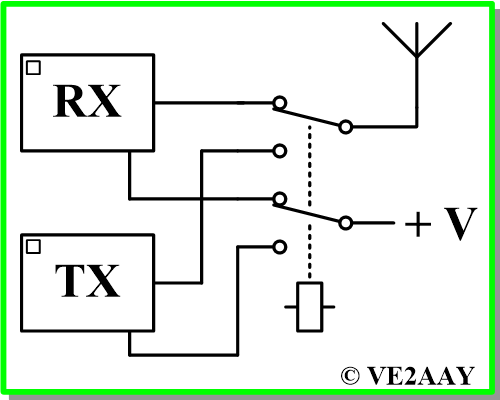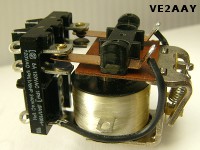Transmit / Receive switching
Conditions d’achèvement
Transmit / Receive switching
- Most frequently, an amateur uses the same antenna to transmit and receive on a given band. The transceiver generally provides a single antenna connector on its back panel. An internal system connects the antenna to the receiver or transmitter.
- In a typical contact on a single frequency, each party talks one at a time, while the other listens.
- While you are in receive mode:
- The antenna must be connected to the receiver section of the transceiver.
- The transmitter remains on standby.
- When you switch to transmit mode:
- The antenna must be connected to the transmitter section of the transceiver.
- The receiver is deactivated.
- [ To avoid the wailing that audio feedback (new tab or window) would produce. ]
- [ To protect the sensitive receiver from the comparatively very strong signal about to be transmitted. ]
- In a transceiver, a switching system must:
- Connect the antenna to the active unit.
- Disable the unit not being used.
- An electromechanical relay (new tab or window) can perform these functions:
- When switched on, an electromagnet (a coil) exerts a pulling force to move electrical contacts.
- [ For an analogy, the relay is to electricity what the railroad switch (new tab or window) is to the railway industry. ]
The following application illustrates how power is applied to one section or the other, while also switching the antenna to the correct unit.
Transmit/Receive switching

Press a button to alternatebetween transmit and receive …
[ Whether the transmitter and receiver are separate or combined within the same cabinet, the concept of transmit/receive switching must be implemented. ]
\
Modifié le: lundi, 23 juin 2025, 16:07

